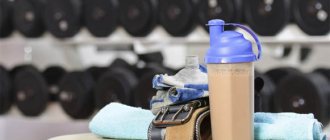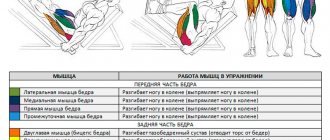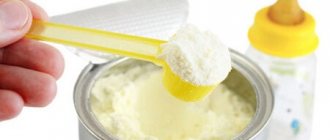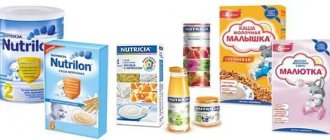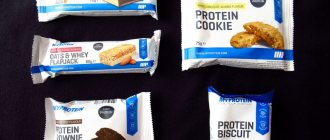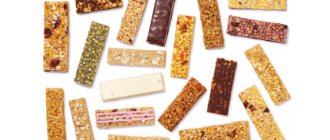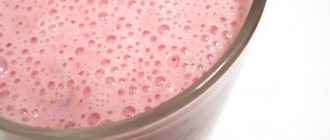Whey protein is a protein supplement for accelerating muscle gain during exercise. Since the source for its production is cow's milk, to save money it is sometimes advised to take analogues - for example, powdered milk or infant formula.
However, are these sports protein substitutes suitable for athletes - their pros and cons. How can you replace protein in your daily diet, as well as when baking or making a smoothie? How much protein do you really need for muscle growth?
Powdered milk and infant formula
In fact, whey protein is milk powder that has been maximally purified from fat, carbohydrates (including lactose, called “milk sugar”) and other impurities. However, the protein content in milk powder is lower than in protein, and the calorie and fat content is higher.
In addition to excessive caloric content, milk powder contains much more lactose - which can cause stomach problems (bloating, flatulence and diarrhea) even in those people whose bodies are able to digest it. In other words, replacing protein with milk powder is not recommended.
// Read more:
- lactose intolerance - what can you eat?
- how to dry properly?
Baby formulas
Formulas for children are carefully purified from lactose and impurities, and also contain vitamins and minerals necessary for the growth of the child. However, despite the high quality, in terms of grams of protein, their cost is several times higher than even the most expensive protein.
If a serving of whey protein contains about 20-25 g of protein, then baby food may contain 2-3 times less - since such a composition was selected taking into account the needs of a child, and not an adult man trying to gain muscle mass.
How to replace creatine?
Creatine is a sports supplement that improves energy processes in the muscles (which helps you train more intensely) and improves the visual volume of the muscles due to the accumulation of fluid. In fact, it is impossible to replace creatine monohydrate with another type of sports nutrition.
However, creatine is a typical component of muscle tissue and is found in all animal meats. If you eat 100-200 g of meat per day, you will definitely cover your daily requirement for creatine.
Some details
This list reflects the general picture. But many of its representatives have certain nuances in use. This also applies to their selection and menu design.
Nuts. Rich in omega 3 and 6. These fats are included in the diet of every athlete. And for athletic tasks, the following options are optimal:
- Almond. It contains 18% protein, almost no carbohydrates, but there is an abundance of vitamins, fiber and microelements. It relieves hunger for a long time, reduces blood sugar, and eliminates excess cholesterol.
- Peanut. A budget analogue of almonds, rich in arginine.
- Walnut. In addition to nourishing muscles, it improves brain function.
- Cedar versions. They are distinguished by a high percentage of arginine and easily digestible vitamins and minerals.
- Hazelnut.
You should not include too many nuts in the menu, because they have a very high calorie content. 50-60 gr is enough. in a day.
Peanut paste. Included in the menu of every bodybuilder. It contains in significant proportions: vitamins E and B3, arginine, magnesium, dietary fiber and protein. Professionals use this product when preparing for tournaments.
This paste has two main varieties: natural and chemical. The first contains only natural ingredients (chopped nuts, honey, salt, etc.), the second is replete with harmful additives. They differ simply: the useful one is separated, and the oil remains on top, and the thick volume remains on the bottom. Harmful - homogeneous in consistency and does not separate. It is rich in saturated fats, which reduces its benefits to zero.
Whole grain cereals. Protein, complex carbohydrates and fiber reign here. All components are easily and quickly absorbed by the body. Examples of them: oats, wheat, rye, millet, buckwheat.
Cedar cake. A powerful source of protein, on the basis of which even professional preparations are created. Its advantages:
- Increasing muscle power and energy resources of the body.
- Development of endurance.
- Strengthening immunity.
- Prevention of hypovitaminosis.
The optimal daily dose is 3 tbsp. l. This is a guarantee of significant athletic progress. The product can be combined with yogurt or vegetable salads.
Seeds rich in plant protein, vitamins, amino acids and minerals. This category includes flax, sesame, cumin and sunflower. For consumption, they are most often added to yogurt, kefir and vegetable salads. They are also used in their natural form.
Cottage cheese with medium fat content. It is used both separately and in combination with fruits, muesli and berries. Special cocktails are also made based on it (more on that later). The product is recommended for breakfast in the proportion of 10-15 tbsp. l.
Legumes. In terms of protein percentage, leadership is given to lentils, soybeans and chickpeas. A glass of decoction from any warrant contains 18-20 grams. such a protein. In addition, these beans are often used in soups, sauces, etc.
Egg whites. Omelettes and scrambled eggs are made from them. Characterized by the absence of fat and the presence of about 6 grams. protein (only in one protein). You can eat 2-4 boiled eggs per day.
Canned tuna. For the best effect, purchase the version in water or its own juice, not oil. Otherwise, you will end up with an abundance of unhealthy fats. The product is used both in dishes (salads, cereals, soups, etc.) and separately.
Chicken. The best option is breast. This is a cheaper, but no less effective analogue of tuna. Only natural products (white meat) are suitable.
Without healthy grains in combination with proteins, there will be no proper progress. And only products made from nut flour (almond, coconut, sesame) are suitable. In addition to protein, baked goods from it contain healthy fats.
These variations are usually used for breakfast, afternoon snack or dinner. Digestion problems may arise at lunch. The optimal schedule is to use 1.5-2 hours before training.
How to replace protein in your diet?
In turn, casein protein can be replaced with low-fat cottage cheese - in fact, cottage cheese and cheese are made from milk casein. It is characterized by a longer rate of absorption and the ability to create a long-lasting feeling of satiety.
If the problem with whey protein is lactose intolerance, instead of buying baby food, look at sports protein for vegetarians. Since it is made not from milk, but from soy, peas and other plant sources, it does not contain lactose.
Homemade protein shake
The advantage of a protein shake is not that it is liquid, but that it contains protein that is maximally accessible for rapid absorption. Once in the stomach, the smallest particles of whey protein are absorbed literally within a few minutes and sent into the blood in the form of amino acids.
It is simply impossible to make such a mixture at home using raw eggs, milk, cottage cheese, bananas and other ordinary products. Even if you mix it thoroughly in a blender, the composition of such a cocktail and the speed of its absorption will be very far from even the lowest quality protein powder.
// Read more:
- how to make gainer with maltodextrin
- casein - pros and cons
Protein for baking
As a final note, whey protein is not the best ingredient for baking. Moreover, the problem lies not in the protein itself, but in the secondary ingredients that provide flowability and ease of mixing with water, as well as taste and color.
If the protein packaging does not clearly indicate that it can be heated to 200 degrees Celsius, it is impossible to say for sure whether the protein contains substances that change their structure at such high temperatures. Remember that protein components are quite capable of becoming carcinogens.
***
Trying to make a protein shake from raw eggs and other homemade ingredients, just like trying to replace whey protein with milk powder, is not the best option. It is often easier to replace protein with meat and other natural products than to try to use similar-looking powders and mixtures instead.
Pros of a sports supplement
A common practice in bodybuilding is to supplement with protein powder.
There are good reasons for this:
- Possibility to choose protein with different absorption rates, depending on your goals
There are many types, ranging from ultra-fast whey hydrolyzate (absorption rate 15-20 minutes) to ultra-slow casein or complex protein (4-6 hours).
- Different absorption rates help optimally close anabolic protein windows
For example, immediately after strength training, fast whey protein is used, and before bedtime, slow casein is used.
- Easy to prepare and easy to take
The powder is mixed with water or milk and is ready for use. Well, the liquid form is easier to digest.
- Helps correct nutrition, compensating for the lack of daily protein intake with the help of a supplement
- High concentration of a substance in a small volume of product
This helps you get your protein intake without overloading the gastrointestinal tract.
- Variety of flavors
Creative examples
Below are several more recipes for protein shakes for gaining muscle mass with different bases. There are quite high-calorie and light versions.
First. Ingredients: milk – 0.5 l; honey – 3 tbsp, banana, cottage cheese – 200 g, nuts – 40 g. Everything is thoroughly whipped in a blender and poured into two containers - that’s two doses a day.
Second. Participants: sour cream – 200 gr; egg yolk, squeezed lemon juice - tbsp, olive oil - 2 tbsp. l, currants (or other berries to taste) – 50-100 g., apricot juice – half a glass.
All of them, except the lemon liquid, are mixed in a blender. Then this juice is added. It turns out two in one: a powerful mass gainer and a refreshing drink. Drink 10-15 minutes before class.
Third. Compound:
- skim milk – 1 tbsp;
- cottage cheese – 2 tbsp;
- cocoa powder and honey - 1 tsp each;
- cinnamon.
Everything is also mixed in a blender, then divided into two glasses. The first is drunk during the day, the second in the evening, but not before bed.
The fourth includes necessarily low-fat ingredients:
- milk - half a glass,
- its dry version – 2 tbsp.,
- cottage cheese – 1.5 tbsp,
- lemon or tangerine – 100 gr.
They are thoroughly mixed in a blender. The resulting drink is drunk only after class.
Protein bar Bounty
For lovers of exotic and unusual products, this version of a coconut-based bar is ideal. For this interesting recipe you need the following ingredients:
- ⅓ cup coconut flakes. Be careful, because you need to use low-fat shavings in this recipe.
- ⅓ cup coconut flour. It can be made from coconut flakes if you don't have any. Or replace it with almond.
- ⅓ low-fat milk. By the way, lovers of everything coconut can even use coconut milk.
- ¾ cup of any protein.
Mix all the ingredients, form into bars and place in the refrigerator.
Photo: instagram.com/ann_biss_
Features of the composition
The main component of a homemade bar is protein powder, which is supplemented with coconut, almond or grain flour, almond, vegetable or cow's milk, and nut butter. After mixing all the ingredients together, a homogeneous dough-like mass is formed, from which bars are made, which is a prerequisite. He doesn't need baking. All ingredients used, including the protein and what is added to it, can be consumed raw to preserve the beneficial elements. On the practical side, making your own protein bars is an opportunity to add natural probiotics, fiber and other beneficial supplements that athletes commonly use to improve their diet.
Recipe . Almond
ifoodreal.com
Ingredients
- 1 cup almonds;
- 1 cup protein powder;
- 1/4 cup cocoa;
- 1/8 teaspoon salt;
- 2 tablespoons melted coconut oil;
- 6 tablespoons honey or maple syrup;
- 1/2 cup coconut milk;
- 2 teaspoons vanilla extract;
- 1/2 cup unsweetened coconut, plus extra for coating.
Preparation
Place almonds, protein powder, cocoa, and salt in a food processor and grind until smooth. In a small bowl, combine the coconut oil, coconut milk, honey and vanilla, then add to the protein-nut powder. Stir until smooth, add coconut and stir again.
Then form small balls from the resulting mixture, roll them in coconut flakes and put them in the refrigerator.
Benefits of protein bar
Homemade protein bars, which athletes make at home using simple recipes, have a number of strengths, which include:
- activation of metabolism;
- accelerated synthesis of hormones and enzymes;
- increased production of red blood cells in the blood;
- rapid restoration of damaged tissues;
- replenishment of essential amino acids;
- maintaining muscle volume.
Whichever of the suggested home recipes you choose, the benefits of eating a product that you prepared yourself will be significant, provided that you use high-quality ingredients that you mix. Protein supplements are much healthier for an athlete than any baked goods, especially since they can be prepared with your own hands.
The homemade protein bar recipe is based on protein, coconut or almond flour, milk and nut butter.
My clear favorites
I'll share with you some of my favorite recipes. Remember, after you get your hands full, you can start experimenting with ingredients. Unleash the creative person within you who loves to eat delicious food!
Try adding nuts, natural flavors, seasonings, seeds or dried fruits to the dough before shaping the bars. In addition, you can replace milk with cream and add exotic types of nut butters and a variety of vegetable oils to the mixture. This will not only improve the taste, but also enrich the bars with essential nutrients. Bon appetit!
Coconut bars
| Ingredients |
|
Orange and Goji Bars
| Ingredients |
|
Unique red biscuits with pumpkin butter
| Ingredients |
|
Differences between animal and plant protein
Products containing protein have a higher concentration of fat. They can be safely used as a replacement for sports nutrition. However, an excess of animal products in the diet provokes an increase in bad cholesterol in the blood. This can cause cardiovascular pathologies.
When creating a menu for muscle growth without protein, it is important to take into account the differences between plant and animal proteins:
- Animal protein cannot be replaced with vegetable protein. This is due to a higher quality set of amino acids.
- Animal products are better absorbed by the body.
- Most plant foods are inferior to animal products in terms of protein.
It is also worth considering that the diet should be balanced. Therefore, it is worth including all products. In addition, meat is better digested when combined with vegetables and herbs.
It is important to consider that many athletes use whey protein to build muscle. This substance is obtained in the manufacture of dairy products. This protein contains all the valuable amino acids. It breaks down more easily and is better absorbed. Such properties give this substance many advantages.
When it comes to plant-based protein sources, some researchers recommend sticking to rice protein isolate. They believe that this substance has the same properties as whey protein.
